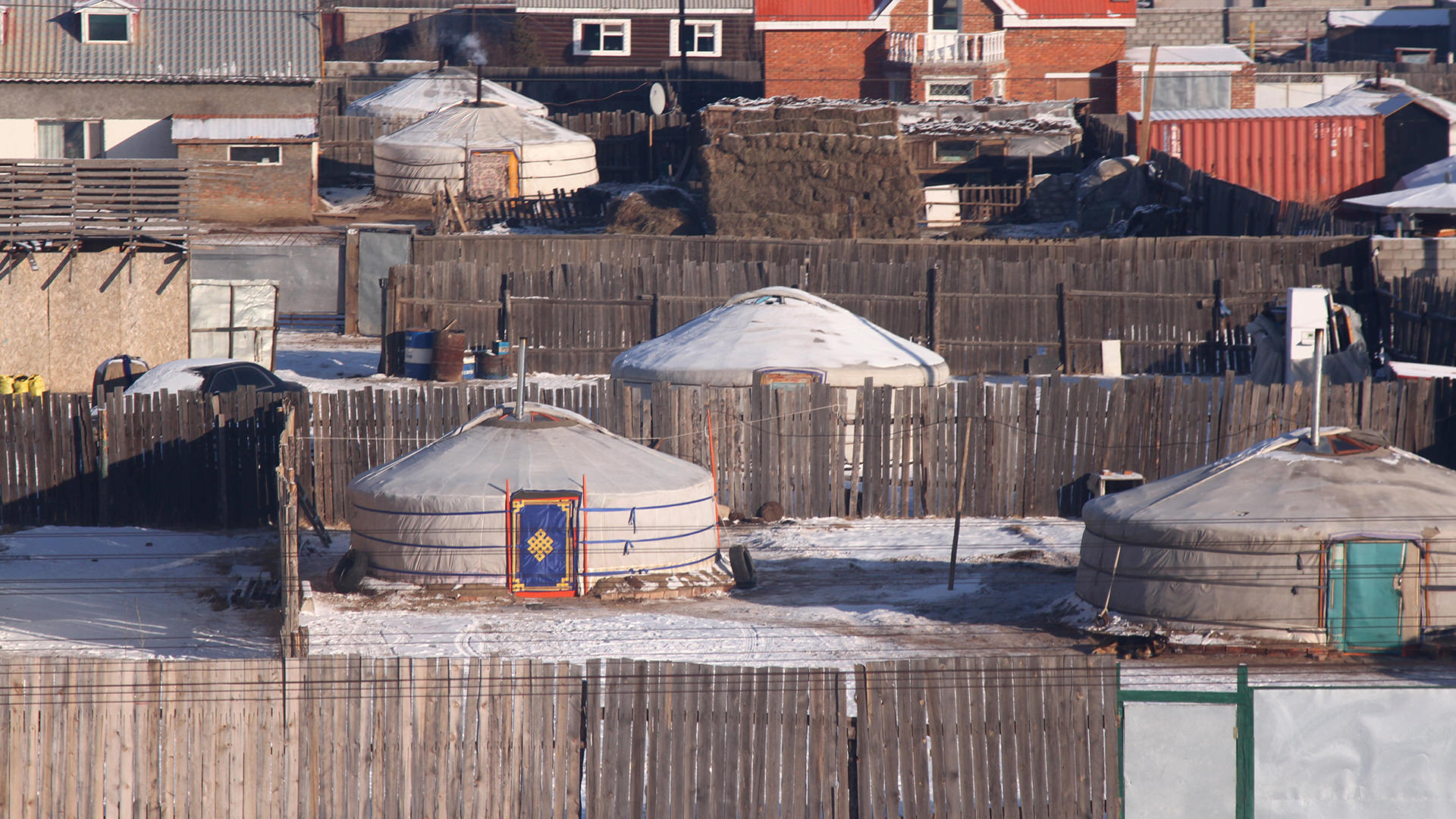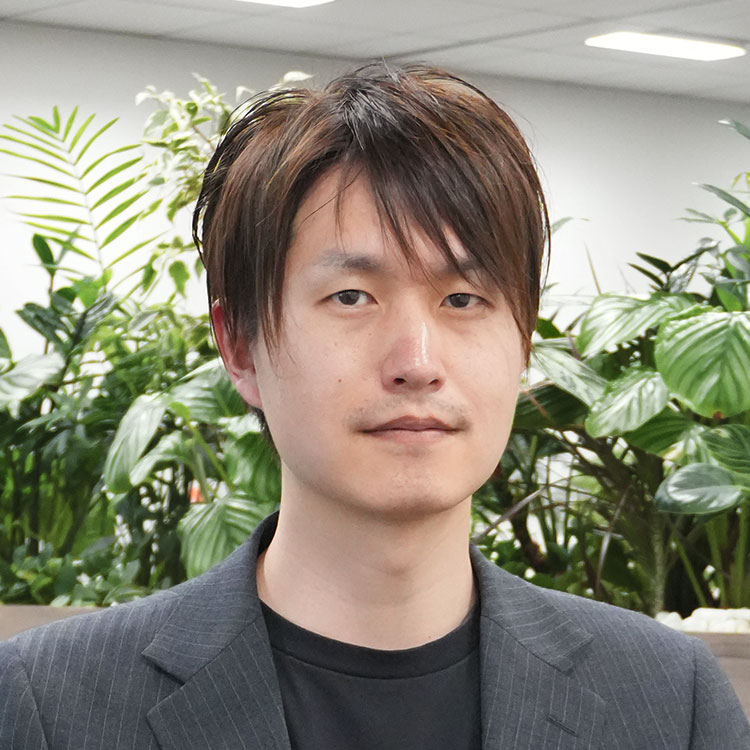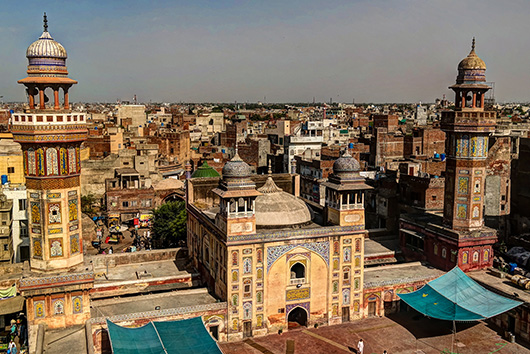Mongolia, a signatory to Paris Agreement adopted in 2015, has set long-term goal for reducing greenhouse gas (GHG) emissions and is working to achieve it. However, given the country's abundant coal resources, it will be difficult to break away from its dependence on coal. JICA launched an Data Collection Survey Project in 2024 to determine what kind of assistance Japan could provide and to formulate guidelines. PACIFIC CONSULTANTS served as the prime partner of the joint venture responsible for the project, and Hironori KOBAYASHI of International Facilities Sec., Facility Engineering Dept., Transportation Infrastructure Div., worked on-site as an assistant to Project Manager.
Data Collection Survey on Promoting Energy Transition in Mongolia (JICA)
<Project Overview>
Project Implementation Period: April 2024 to February 2026.
Project Objectives: Mongolia has set a goal of increasing the proportion of renewable energy which is a purely domestic energy resource, to 30% by 2030, but no significant progress has been made. Taking into account Mongolia's unique energy situation, as well as the current state of the economy, society, and people's lives, we will collect and analyze data necessary for the study of how to support the energy transition and create a draft roadmap for achieving carbon neutrality by 2050.
<Mongolia>
Mongolia is a landlocked country sandwiched between China and Russia. Its area is 1,564,100 km2, about 4 times of the size of Japan, but its population is about 3,505,000, slightly smaller than the Yokohama city. The country has abundant deposits of mineral resources, including coal, and its economy is supported by their exports. Its capital is Ulaanbaatar, where roughly half of the total population is concentrated. Reliance on abundant coal for both power generation and heat supply has led to increased GHG emissions and worsening air pollution in Ulaanbaatar, and resolving this issue has become a major challenge.
(Created based on JICA materials from the population data from the Ministry of Foreign Affairs.)
INDEX
- A shift away from coal-based energy is needed
- Conducting interviews with local residents
- Coal dependence is not easy to advance: What the survey reveals
- Dealing sincerely with local residents one-on-one
- Unless it's something that local people "want to do,"
A shift away from coal-based energy is needed
Mongolia lies between China and Russia, a vast expanse of land. It's often thought of as a country of nomads who live in portable dwellings called gers and roam the grasslands with their sheep. However, in 1990, the country abandoned socialism and adopted the path of democratization and a market economy, and in 1992 fully adopted a capitalist economy. This prompted people to settle in cities, and today traditional nomads are said to account for around 10% of the population. Concentration in the capital, Ulaanbaatar, is particularly severe, with half of the total population living there. This has led to worsening problems such as rising greenhouse gas emissions and worsening air pollution. The underlying cause is the country's heavy reliance on coal, which is abundantly produced in the country.
In fact, approximately 90% of the electricity generated in Mongolia comes from coal-fired power plants, with only 10% coming from renewable energy sources such as wind and solar power. The Mongolian government has set a goal of increasing the proportion of purely domestic renewable energy to 30% by 2030, but hydroelectric power generation is hindered by international river management issues with China and Russia, and wind and solar power generation are subject to significant technical constraints on connecting to grid power sources, preventing their introduction. Furthermore, due to the country's fragile financial structure, the construction, expansion, and renovation of energy infrastructure has not progressed sufficiently.
However, coal dependence is not just a problem of electricity supply. Electricity accounts for only 15% of the country's total energy supply, with over 60% of that coming from heating. Mongolia is located at 47 degrees north latitude, the same location as Sakhalin, which is further north than Hokkaido in Japan and its inland location makes it extremely cold. Midwinter temperature can drop to nearly -40°C. Summer is short, and morning and evening are cold enough to require heating. Heat for the heating is supplied in urban areas by circulating hot water produced by coal-fired Combined Heat & Power (CHP) plants or Heat-Only Boilers (HOB). Low-income residents' houses, known as gers and baising, on the outskirts of cities primarily uses coal stoves. This makes Mongolia's CO2 emissions per purchasing power parity GDP the second highest in the world. At this rate, achieving carbon neutrality by 2050 will be difficult.
Japan, primarily through JICA, has been continuing projects to stabilize the power grid so that it can withstand the large-scale introduction of renewable energy, but a major challenge is to support an energy transition that balances low carbonization with economic growth, while looking beyond the power sector and taking a bird's-eye view of the entire energy sector. What Japan can do is to carry out large-scale data collection and survey, which will be the basis for considering and proposing a cooperation policy, and a joint venture led by PACIFIC CONSULTANTS was awarded the contract.
Conducting interviews with local residents
A total of 6 companies were involved in the JV, which divided the work into a wide range of surveys, not only covering the energy sector but also industry sector, transportation and traffic sector, and residential sector. The survey team was large, with over 25 experts. The project's goal was to create a proposed roadmap for introducing the new technologies necessary to achieve carbon neutrality by 2050 and clarify the outlook for the energy transition. KOBAYASHI assisted the PM and oversaw the entire project. At the same time, he was responsible for surveying and forecasting the residential sector, particularly in the context of the study of how future energy demand will change, which was divided into 3 sectors: industry, transportation, and residential. Naturally, there was no readily available data in the country. While carefully examining existing data and determining what information could be used, the team decided to conduct repeated on-site interviews.
"We will need to come up with a long-term plan extending to 2050, but we first need to take a good look at what the current situation is. Rather than simply speaking to officials from the Ministry of Energy and other government agencies, I thought it was necessary to first find out how energy is actually being used in people's daily lives. That's where the ger districts became important."
Coal dependence is not easy to advance: What the survey reveals
The Ger District is a low-income residential area that spreads out on the outskirts of the capital, Ulaanbaatar, and is named after the simple gers that people who moved from rural areas to the city in search of work live in. The number of these areas continues to grow, and it is said that currently 60% of Ulaanbaatar's population, or about 900,000 people, live there. Once people have saved up a little money, it is common to build a simple house called a "baising" next to their gers, and most people keep their gers even after building their baishins.
"The land is so large that there is no need to demolish it. There are various ways to use it, such as offering it as a private lodging for tourists or as a boarding house for children of relatives living in rural areas who attend school in Ulaanbaatar," KOBAYASHI says.
Coal stoves are used in the ever-increasing number of gers and baisings. While the city center has a hot water district heating system (central heating), the ger districts have no such facilities, and there is no water or sewerage network. The CO2 emitted by these stoves is a major factor in making Mongolia a major GHG emitter, but nitrogen oxides and dust, along with automobile exhaust, are also worsening air pollution in the basin city of Ulaanbaatar.
"When conducting research on civilian life, I thought it was important to go into the ger areas and listen to the stories of ordinary people, especially those who are in socially vulnerable positions," KOBAYASHI says.
"About 6 years after joining the company, I decided that this was my only chance, so I took advantage of the company's program to study abroad in the UK for a year, where I studied development studies. One of the things I learned there was that in development, you have to look after those in the most vulnerable positions. During my research in Mongolia, I took the time to speak with several single mothers living in the ger districts. I got to hear about all sorts of things, from the kind of lives they'd led to what they were thinking at the time."
He says that there are some things that he was able to see only by listening carefully to what they had to say.
"It seems that using coal for warmth has become a part of their culture. People light coal stoves not only in the harsh winter, but also in the summer when the sun goes down and it gets cold. This is for heating, of course, but also to keep insects away, and people also want the smell of smoke that comes from burning coal. They say that the smell has been a part of their lives since they were children, so they can't get away from it. I see, that's how it is."
Dealing sincerely with local residents one-on-one
Some young researchers seem to have the feeling that "by burning coal to keep warm, we are polluting the air and harming our own health. It's obvious if you think about it for a moment..." However, KOBAYASHI felt that if they continued to have such feelings, they would not be able to conduct a real survey.
"Burning coal releases CO2 and is bad for your health. It's easy to say from above that renewable energy is better. But if you just take that for granted, it won't resonate with them. They have their own reasons, meanings and rationale for using it. If we don't get that far, our research won't be worthwhile, and we won't be able to come up with energy transition measures that will motivate them."
KOBAYASHI maintained this stance throughout his field research, and it seems that this also resonated with the interpreters he employed locally.
"To the interpreters who accompany us on site, our interview target persons are our fellow buddies. They are sensitive to the way we interact with them. If we were to treat them with a condescending attitude, as if we were from a developed country, the interpreters would feel uncomfortable. On the other hand, if they felt that we were interacting with them sincerely as human beings, they would want to help solve the issues as part of the research team. This leads to an improvement in the quality of communication through the interpreter."
Unless it's something that local people "want to do,"
Looking long-term, up to 2050, it's clear that Mongolia's energy transition depends on increasing the proportion of renewable energy sources. KOBAYASHI says that the core of the long-term roadmap will be a combination of strengthening the power transmission and distribution system, increasing flexibility and reliability, expanding the use of renewable energy sources like wind and solar, developing new fuels like hydrogen, promoting the concepts of zero energy building (ZEB) and zero energy housing (ZEH) and strengthening insulation measures, and utilizing geothermal heat pump technology, which can provide stable heat even in extremely cold climates. However, unless the people living in Mongolia today are willing to implement these measures, they will remain pie in the sky.
"It's not that difficult to simply draw up a beautiful roadmap, but I think careful research is essential to making it one that has the power to motivate people. For example, in the future it will be necessary to switch from coal stoves in ger districts to electric stoves. Currently, single-parent families think it is dangerous for their children to get home before them and turn on the coal stove, so they call their children to work rather than letting them go home alone. But if electric stoves are easy to operate, the chances of them being able to keep warm safely even when alone will increase. In that sense, it will be worth switching to electric stoves. I think you can say that this is a story that moves women's hearts. This is just one example, but it shows that this kind of approach is necessary."
"The topic of the future of energy covers a wide range of topics, and because it is closely related to people's daily lives, it cannot be discussed simply in terms of technology. For this reason, there are very few experts who can envision what energy will look like in the future. You can start from one entry point and expand on it. That's what makes it interesting. Moreover, it is a field that requires interest and knowledge in the humanities and social sciences, so I think that in that respect I can put what I have learned to good use."
When he was a student, KOBAYASHI decided to backpack around the world, and now he has once again realized how fascinating it is to learn about the lives of people around the world up close, and how this has enriched his own life.







